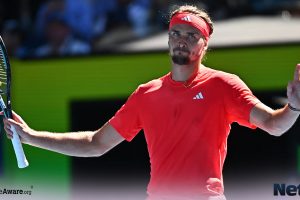![]()
The 2016 Olympics were marred with controversy surrounding Russia’s “state sponsored” doping scandal. Since the Olympics finished just over a month ago, Russian hackers have released doping tests from notable athletes around the world, including Team GB’s Sir Bradley Wiggins. But the Olympics and cycling aren’t the only sports that struggle with doping, tennis is another that struggles and often goes under the radar. Let’s have a look at some tennis players who’ve failed tests over the last 20 years.
1995
Mats Wilander and Karel Novacek were both suspended for three months after failing drugs tests. Both tested positive for cocaine at the 1995 French Open.
1998
1998 Australian Open winner Petr Korda tested positive for the banned steroid nandrolone following a quarter final at Wimbledon against Tim Henman. The Czech was banned for 12 months from September 1999 and docked of all prize money and ranking points.
2001
Following the 2001 Cincinnati Masters, Juan Ignacio Chela was suspended for three months for testing positive for methyltestosterone.
In the same year, Guillermo Coria tested positive for nandrolone after a match against Michel Kratochvil. He was later banned for two years.
2003
Mariano Puerta received a two-year suspension after testing positive for clenbuterol at Vina del Mar. The suspension was later reduced on appeal, with Puerta claiming that it was prescribed by a doctor to combat asthma and that it had no enhancing effect.
Puerta was banned again in 2005 after testing positive for the use of a cardiac stimulant following his loss in the French Open final to Rafa Nadal. He was suspended for eight years, the longest in tennis history at the time.
2004
Greg Rusedski tested positive for nandrolone in January 2004, but was later cleared of all charges.
2005
Guillermo Cañas tested positive for a diuretic called hydrochlorothiazide in August and was suspended for two years. He was forced to forfeit $276,070.
2007
Martina Hingis called a press conference to announce that she was under investigation for testing positive for benzoylecgonine. She was suspended for two years in January 2008 and announced her retirement, but later returned to the WTA Tour in 2013.
2009
Andre Agassi retired from tennis after the 2006 US Open, but admitted using crystal methamphetamine a year before winning the French Open in 1998. He confessed that he’d lied to the sport’s governing bodies in the same period in order to avoid a ban.
Richard Gasquet was initially suspended in 2009 for testing positive for cocaine, with traces found in his urine sample. He was cleared to return two months later after a tribunal found that he hadn’t intentionally taken the drug.
Belgians Yanica Wickmakyer and Xavier Malisse both received one-year bans from anti-doping officials in their homeland in 2009. Wickmayer was deemed guilty of failing to declare her whereabouts on three occasions, a requirement under WADA standards. Malisse was guilty of the same crime twice and had also missed a test when he was unavailable for testing at an address he had provided.
2012
Barbora Strýcová was banned for six months between October 2012 and April 2013 for testing positive for the banned stimulant sibutramine.
2013
Marin Čilić was forced to withdraw from his second round match at Wimbledon in 2013 due to a left knee injury. A month later however and it was revealed that Čilić had been informed that he’d failed a drugs test and subsequently withdrew.
2015
Viktor Troicki was banned for 18 months for failing to provide a blood sample at the ATP Masters in Monte Carlo. The suspension was reduced on appeal.
2016
Maria Sharapova revealed in a press conference that she had failed a drugs test at the Australian Open earlier this year. She tested positive for meldonium, a drug added to WADA’s banned substances list in 2016. As a result of her failed test, both Nike and Tag Heuer suspended their relationships with Sharapova. She was later banned for two years.



